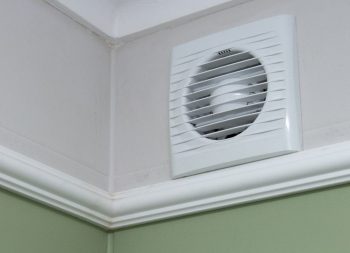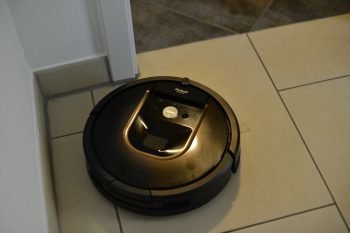
In the world of home maintenance, there’s a common issue that homeowners often face – leaks in their air conditioning (AC) units. If not addressed promptly, these leaks can lead to costly repairs or even a full replacement of the unit. One solution to this problem is using a stop leak product. This article will provide an in-depth guide on how to put stop leak in an AC unit, potential risks, alternatives, and the importance of regular maintenance.
To put stop leak in an AC unit, first turn off the AC unit and disconnect it from the power source. Locate the low-pressure service port, typically found on the larger diameter refrigerant line. Attach the stop leak product’s hose to this port, turn on the AC unit to its maximum cooling setting, and open the valve on the hose to allow the stop leak to flow into the AC system. Let the AC unit run for at least 15 minutes to circulate the stop leak, then turn off the AC unit and disconnect the hose. Finally, reconnect the AC unit to the power source and check for any remaining leaks. Always follow the manufacturer’s instructions when using a stop leak product.
What Is AC Stop Leak?
AC stop leak is a product designed to seal minor leaks in air conditioning systems. It works by reacting to the temperature of the refrigerant leaking out of a pinhole in the AC pipe, changing from a liquid to a hard sealer. This effectively blocks the leak and allows the AC unit to function normally. However, it’s important to note that while stop leak products can provide a temporary solution, they should not be considered a long-term fix for larger leaks or for newer systems.
When to Use Stop Leak in an AC Unit
Stop leak products can be useful when you’re dealing with a small refrigerant leak that’s difficult to locate and repair. They serve as a quick fix to seal small leaks and keep the AC system working. However, for larger leaks or newer systems, it’s generally recommended to consult a professional to diagnose and handle the issue.
Identifying a Leak in Your AC Unit
Before you can address a leak, you need to identify it. Some common signs of a leak include: – High electric bills – Longer cooling cycles – Water leaks near the unit – Hissing noises from the unit – Bubbles in evaporator coils – Ice on evaporator coils – Increased indoor humidity
If you notice any of these signs, it’s likely that you have a refrigerant leak. In such cases, it’s recommended to consult a professional to inspect your AC unit.
How to Put Stop Leak in an AC Unit
If you’ve identified a small leak and decided to use a stop leak product, here are the steps you should follow:
- Turn off the AC unit and disconnect it from the power source.
- Locate the low-pressure service port on the AC unit. This is usually found on the larger diameter refrigerant line, between the evaporator and the compressor.
- Attach the stop leak product’s hose to the low-pressure service port. Ensure the connection is secure.
- Turn on the AC unit and set it to the maximum cooling setting.
- Open the valve on the stop leak product’s hose to allow the stop leak to flow into the AC system.
- Allow the AC unit to run for at least 15 minutes to circulate the stop leak throughout the system.
- Turn off the AC unit and disconnect the stop leak product’s hose from the low-pressure service port.
- Reconnect the AC unit to the power source and turn it on to check for any remaining leaks.
Remember to always follow the manufacturer’s instructions when using a stop leak product.
Risks and Downsides of Using Stop Leak
While stop leak can provide a quick fix, there are potential risks and downsides. These include clogging and contamination of the AC system, crystallization of the sealant, limited effectiveness, and potential damage to recovery equipment. Therefore, it’s always recommended to consult with a professional HVAC technician before using a stop leak product.
Alternatives to Using Stop Leak
If you’re hesitant about using a stop leak product, there are other options you can consider. These include identifying and repairing the leak, regular maintenance, replacing the damaged component, or even upgrading your AC unit.
Regular Maintenance
To prevent severe damage, it’s important to check your AC unit for leaks regularly. Regular inspections and maintenance can help prevent leaks from occurring in the first place and ensure the efficient operation of your air conditioning system.
In conclusion, while using a stop leak product can provide a temporary solution to minor leaks in an AC unit, it’s always recommended to consult with a professional for a reliable and long-term solution. Regular maintenance and prompt repairs can help prevent leaks and ensure your AC unit functions efficiently for years to come.
Frequently Asked Questions
Can I use a stop leak product on any type of AC unit?
Yes, stop leak products can be used on most types of AC units. However, it’s always best to check the manufacturer’s instructions or consult with a professional before using.
How often should I use a stop leak product?
Stop leak products should only be used when a leak is identified. They are not meant for regular or preventative use.
How long does the effect of a stop leak product last?
The effectiveness of a stop leak product can vary based on the size and location of the leak. In general, stop leak products provide a temporary solution and are not considered a long-term fix.
Are there any safety precautions I need to take while using a stop leak product?
Yes, always turn off and disconnect the AC unit from the power source before applying the stop leak product. Also, ensure to wear safety gloves and glasses to protect yourself.
Can I apply the stop leak product myself or do I need a professional?
While it is possible to apply a stop leak product yourself by following the manufacturer’s instructions, it’s always recommended to consult with a professional. This is especially true for larger leaks or newer systems where the risk of damage is higher.












